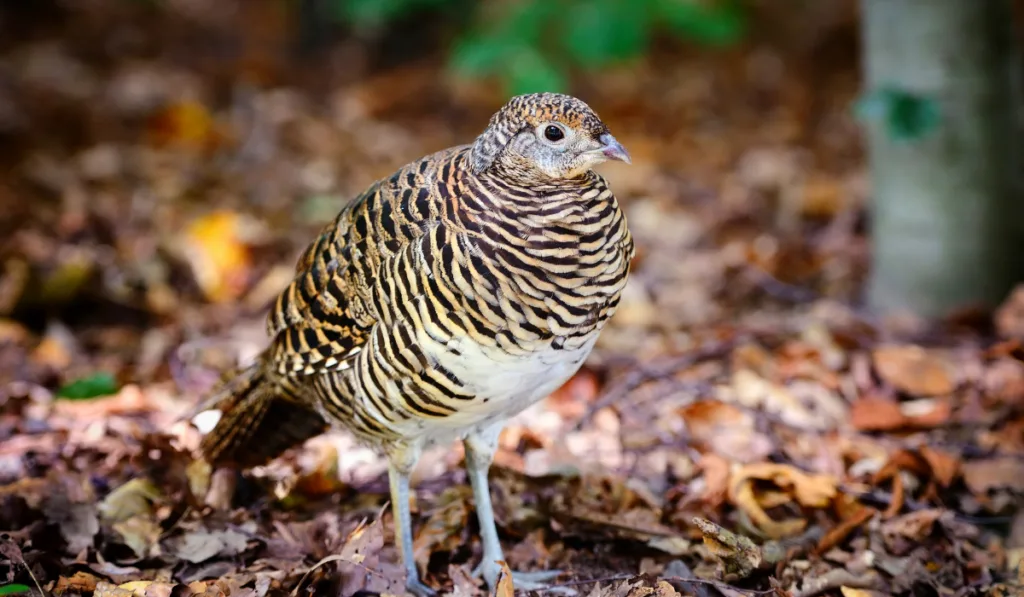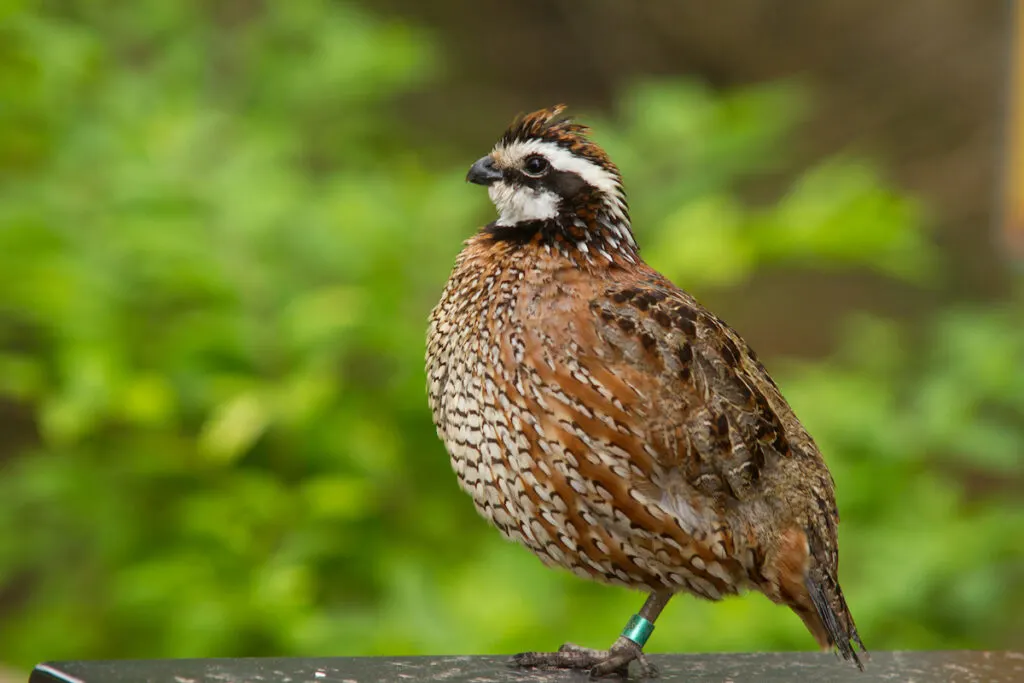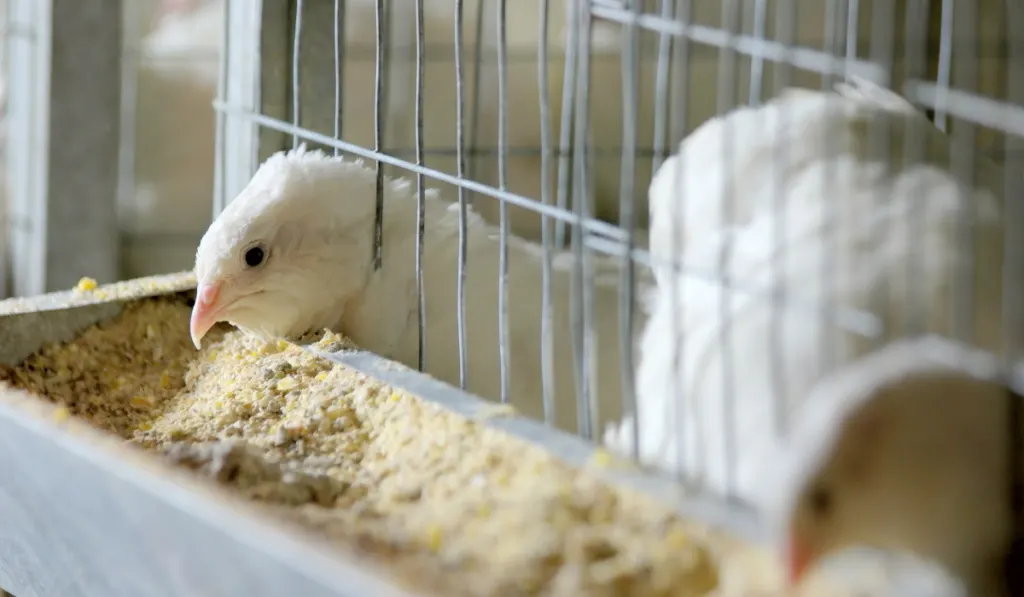Quail is one of the most sought-after game birds in the world. They are an extremely smart bird, and because of their small stature, can be raised in an exceedingly small space. This makes them an ideal bird for homesteaders or small backyard farmers to raise for eggs and meat.
Quail can fly but will only do so if it is convenient for them. They have powerful wings but are not capable of enduring long flights. When they do fly, they fly at a speed of up to 40 mph (64 kph) for about 100 yards (91 meters). Generally, they fly to escape predators or to roost in trees.

There are many different types of quail, but their numbers are diminishing due to their dwindling habitat. They make an excellent farmyard bird but will need to be contained to prevent them from flying out of your yard and also to protect them from predators.
Table of Contents
Can Quail Fly?
Quail can fly, but they don’t like to! They prefer to walk on the ground during the day but are always wary of predators.
Quail are particularly vulnerable to attacks from other birds, snakes, and coyotes trying to steal their eggs or kill the chicks. Domestic and feral cats are the most significant natural hunters of these birds.
Adults and chicks will either run or fly away to escape these predators. Quail can run at a speed of up to 15 mph (24kph), weaving in and out of the underbrush to evade capture!
Quail will only fly as a last resort, generally to the top of the closest tree or out of their enclosure if the predator has attacked them at night.
Do Quail Migrate?
There is one rare exception to the no-flying rule, and that is the European quail. They migrate between Northern Europe and sub-Saharan Africa during the winter months. During this migratory flight, hunters know not to catch this bird for food as they are incredibly toxic during this flight period and can cause severe damage to the stomach of anyone who eats them!
How Do I Stop My Quail From Flying?
If you are raising quail for meat and eggs, you need to contain them to keep them safe from predators and keep them from running away and roosting all over your yard or escaping your property!
While it may be impossible to stop them from flying, you can prevent them from flying at night by locking them in a coop or an enclosure. If you don’t want them flying and running around your yard during the daytime, you could build a large, covered enclosure to keep them contained.
You may then be restricted to the numbers that you can keep depending on the size of the area that you have available to keep the birds in.

How To Raise Quail
Quail are generally bred for their eggs or meat. Before you start making any plans on how to raise them, check the regulations in your area to see what the requirements are for keeping birds in your backyard for food and breeding purposes.
Once you have sorted out the legal aspects, research which breed is the best for your purposes and follow these simple steps to raising healthy quail!
1. Should You Free-Range Your Quail
Quail are a hardy bird and very easy to raise. They are significantly quieter birds than chickens which makes them ideal for small spaces or even suburban back yards.
If you are raising your birds in your backyard, first decide how much space you have available. You need one sq foot (30cm) per quail in your yard or enclosure.
- Are they going to roam free during the day and be locked up at night?
- Do they need a permanent enclosure?
A nighttime enclosure could be as simple as a chicken coop. Ensure that the roof is solid and high enough that the quail won’t hit their heads when they fly.
When startled, quail will fly straight up. If they hit their heads on the roof, they could die, so the ceiling should be at least 8 feet (240cm) high. A soft wire net such as deer netting should surround the coop to keep the quail in and the predators out!
If you are keeping the quail in a full-time enclosure, follow the same procedures as for the nighttime enclosure, but base the sizes on the number of birds you plan to keep.
Both structures need roosting boxes for the females to lay and incubate eggs. If you plan to raise quail for their egg-laying purposes, you might need to restrict the male-to-female ratio.
If you are breeding the quail for meat, you should have one male for every two females.
Quail require at least 14 hours of daylight to continue laying. Install a timed light in the enclosure during the shorter winter days, but only allow it to burn from dawn to dusk to simulate natural daylight.
2. Should You Start With Adult Quail Or Chicks?
You can buy or start breeding quail at various stages of their development. Make sure that the breeder that you are buying your quail from is reputable.
You can create your own breeding program while the quail is in various stages of development.
- Eggs for incubating. If you buy freshly laid eggs, you will need to buy an incubator and turn the eggs regularly until they hatch.
- New hatchlings. These are fragile birds and are at the most challenging stage to hand raise. They require a brooding box and a heat box. You would have to hand feed them a few times a day.
- 4 -5 week old chicks. At this age, the chicks can forage and feed themselves and are less likely to get sick or die, but they are still vulnerable to predators.
- Adult birds. Starting your breeding program with adult birds is the simplest way to go as they will look after themselves and hatch your eggs. Make sure that you buy male and female birds!

3. What To Feed Quail
Quail is a wild game bird, so they should be fed a higher protein meal than chickens. Quail will not overeat, so they will not gauge themselves if there is extra food available.
If they are free to roam during the day, it is unnecessary to provide food for them. They do like to scratch around in the dirt for insects and will forage for plants and eat any grains you throw out.
You should provide grain inside the enclosure for the quail to eat throughout the nighttime if they need it.
Adjust the female quails’ feed when they are laying as they need extra protein, calcium, and phosphorus during this time.
Quail feeders are available from your local garden store, or you could set a platform feeder for them, which will keep their food fresher for longer.
Change the water bowls daily to provide fresh, clean water. Watch the young quail around the water trays to make sure that they don’t drown. Consider placing wire mesh over the water trays or standing a few small rocks in the water tray for the chicks to stand on.
4. How To Keep Your Quail Enclosure Clean
Quail poop has ammonia in it so the enclosures can become smelly. Clean the quail coop out every day and replace the brood nest bedding regularly to prevent diseases and parasites.
You could use a chicken tractor to house the quail in. This can be moved around to a different spot daily, which would provide new ground cover every day for them to forage and keep their area clean from poop.
Ensure that the fence around the tractor is secure and that the wire mesh covers the floor, the sides, and the top to prevent predators from getting into the enclosure.
Conclusion
Quail is a good all-rounder bird, providing sport for huntsmen and meat and eggs for the homesteader or small backyard farmer. Deciding which type to breed determines how and where you can raise them.
Providing enclosures to keep them safe from predators is a great way to prevent them from dying from shock or from flying away and injuring themselves!
Resources
- https://www.woodsmanreport.com/do-quail-fly/
- https://mycuteanimals.com/do-quail-fly/
- https://wildbirdsonline.com/blogs/news/quail-behavior-traits-and-characteristics
- https://bestfarmanimals.com/the-complete-guide-to-raising-quail/
- https://www.backyardchickens.com/threads/stupid-quail-question.614697/
